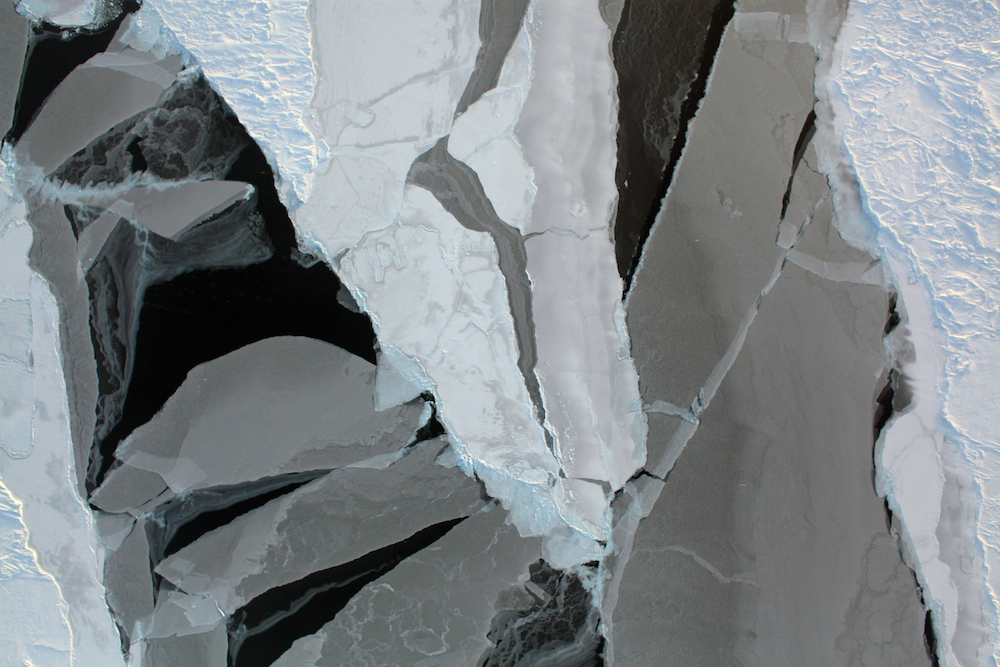What's Melting Arctic Ice? NASA Investigates Clouds

Arctic sea ice is melting fast, having lost about 1 million square miles since the 1970s, but experts are still figuring out what factors, such as cloud cover, are speeding or slowing the ice's demise.
A new NASA mission is flying researchers over the Arctic to study the interplay between cloud types and ice conditions. The Arctic Radiation IceBridge Sea and Ice Experiment (ARISE) campaign will lead research flights from Aug. 28 to Oct. 1, the period of greatest ice melt during the year, NASA said in a statement.
"In recent years, we've been setting new records of the [sea ice] minimum every year," Tom Wagner, NASA Cryosphere program manager, told Live Science. "The good news is this year we aren't poised to have a new record, but it's not like the sea ice really recovers. It will still be one of the lowest ones on record." [See a NASA video on the ARISE mission]
Sea ice is a critical player of Earth's changing climate. It acts like a mirrored hat sitting on top of the planet, Wagner said. Without that hat, the sun's heat will warm the oceans, leading to more melting. In turn, the oceans release more moisture, which appears to influence atmospheric circulation and cause melting in Arctic permafrost. This, in turn, further increases global warming.
In 2009, Arctic sea ice was just two-thirds as big as it was in 1979, NASA reports. "And this is such an important part of the Earth's system," Wagner said.
ARISE will enable scientists to take simultaneous measurements of ice, clouds, and the levels of incoming and outgoing radiation, all of which influence global warming, experts said. The team will use NASA's C-130 aircraft from the Thule Air Base in Northern Greenland during the campaign's first week, and operate out of Eielson Air Force Base near Fairbanks, Alaska, for the rest of the retreat.
The researchers will use a variety of tools on board the flights, including instruments that measure incoming solar and outgoing infrared radiation, ice surface elevation, and cloud properties such as particle size, experts said. The team will also record cloud types and surface conditions, including open water, land ice and sea ice. NASA satellites equipped with a tool called Clouds and the Earth's Radiant Energy Systems (CERES) will provide simultaneous data on Arctic conditions.
Get the world’s most fascinating discoveries delivered straight to your inbox.
This is the first time that many of these tools have combined forces, NASA said. Overall, the mission will provide new insight into the effect of clouds on Arctic sea ice, Wagner said.
"Clouds play varying roles in the Arctic," he said. "In some ways, they block sunlight from getting down and maybe help preserve the ice a bit. But in other ways, they can hold heat near the Earth's surface."
He added, "What we're trying to do is go out with a plane and measure these things so we can do a better job with our model."
The researchers will also study the Arctic's varying cloud types and how they form. Water or ice layers in some clouds may affect sea-ice conditions in different ways, Wagner said.
ARISE is not the only NASA mission studying Arctic sea ice. The agency has 17 space missions, and many cross the poles to help researchers study sea ice, Wagner said. And the Ice, Cloud and land Elevation Satellite-2 (ICESat-2) is slated to use a laser to study sea ice thickness, starting in 2017.
These projects will help scientists understand the factors influencing sea-ice melt, and the ice's larger effects on global climate.
"What we know is this: The Arctic is a really important part of the Earth's climate system, and we are changing it," Wagner said.
Follow Laura Geggel on Twitter @LauraGeggel and Google+. Follow Live Science @livescience, Facebook & Google+. Original article on Live Science.

Laura is the archaeology and Life's Little Mysteries editor at Live Science. She also reports on general science, including paleontology. Her work has appeared in The New York Times, Scholastic, Popular Science and Spectrum, a site on autism research. She has won multiple awards from the Society of Professional Journalists and the Washington Newspaper Publishers Association for her reporting at a weekly newspaper near Seattle. Laura holds a bachelor's degree in English literature and psychology from Washington University in St. Louis and a master's degree in science writing from NYU.
